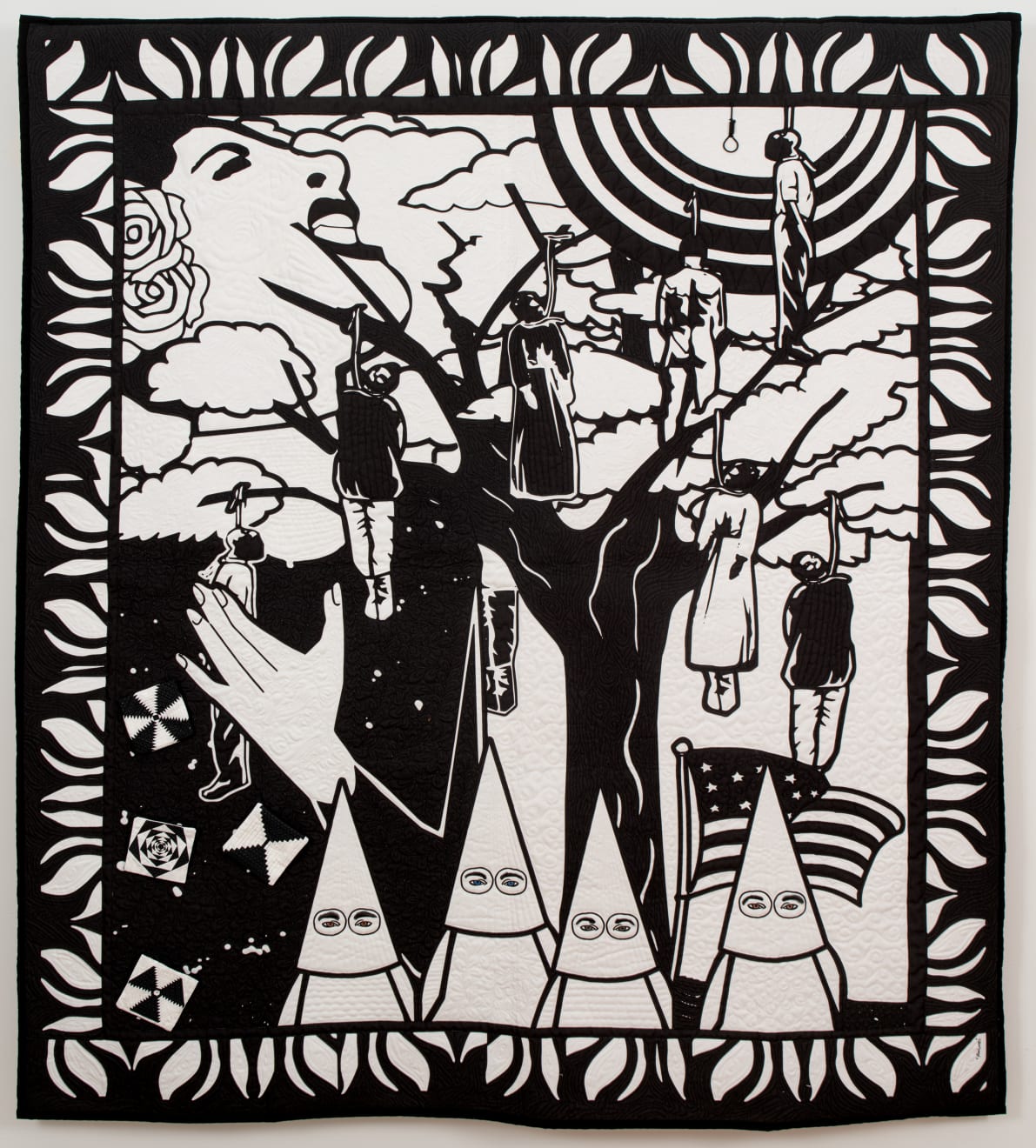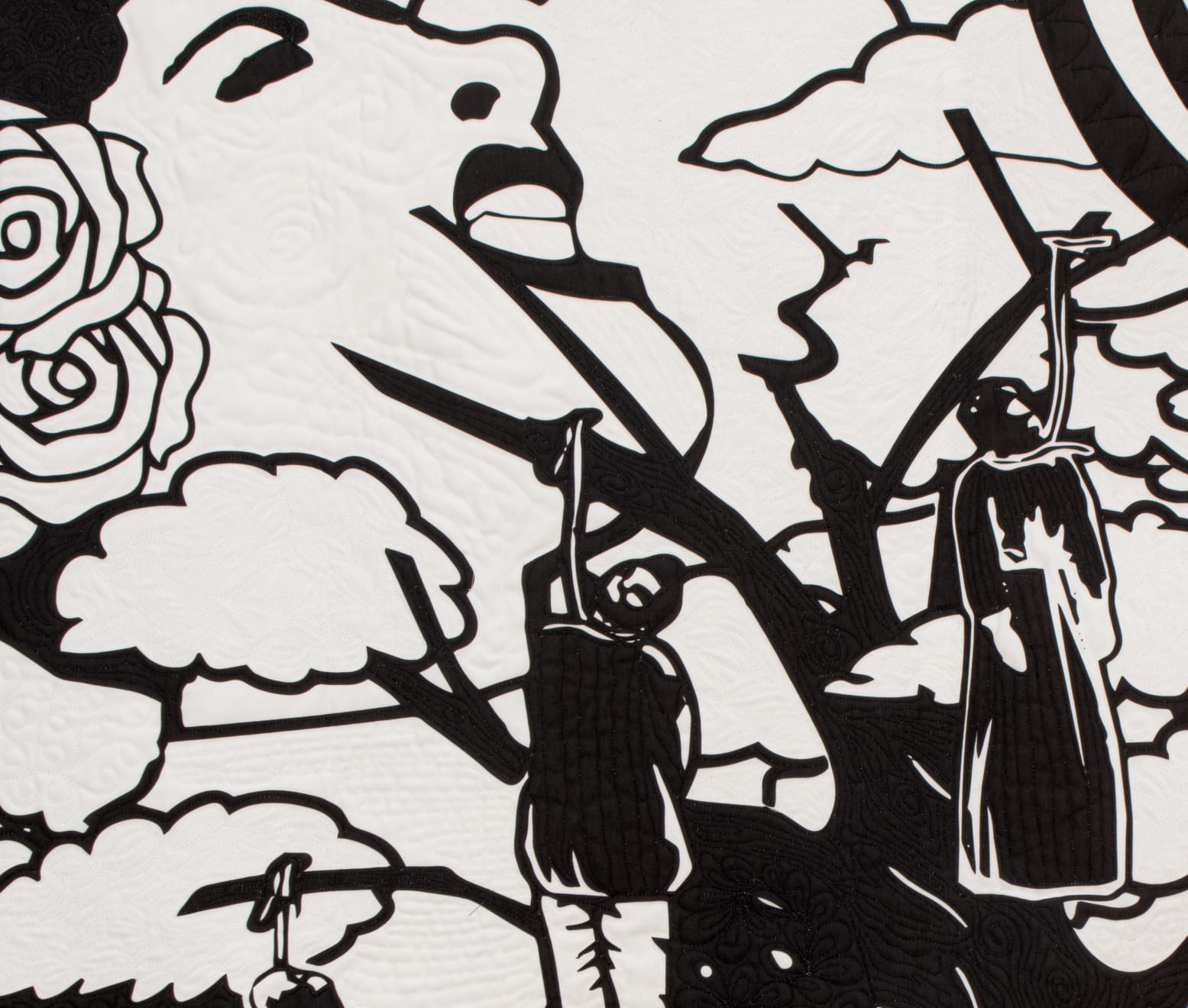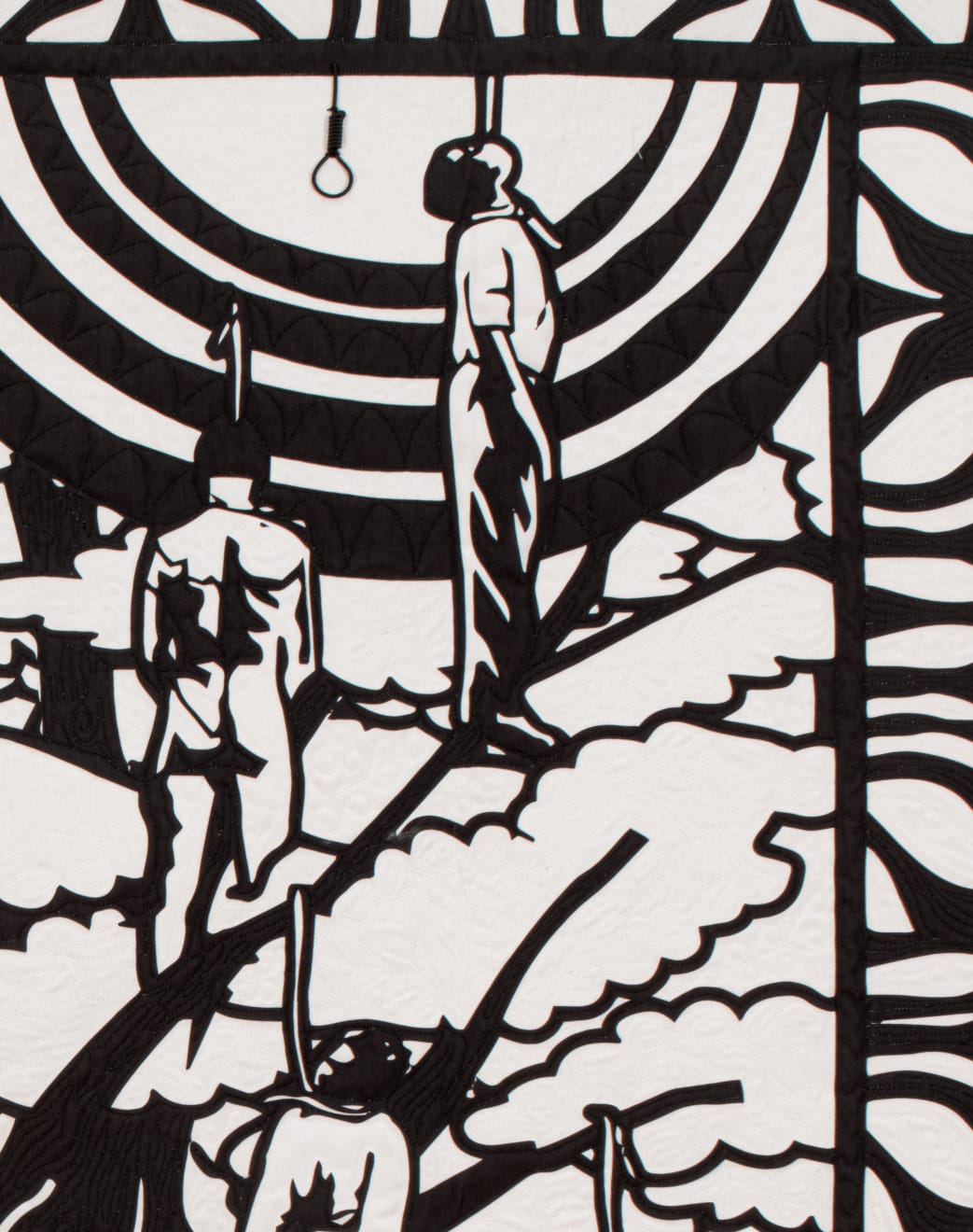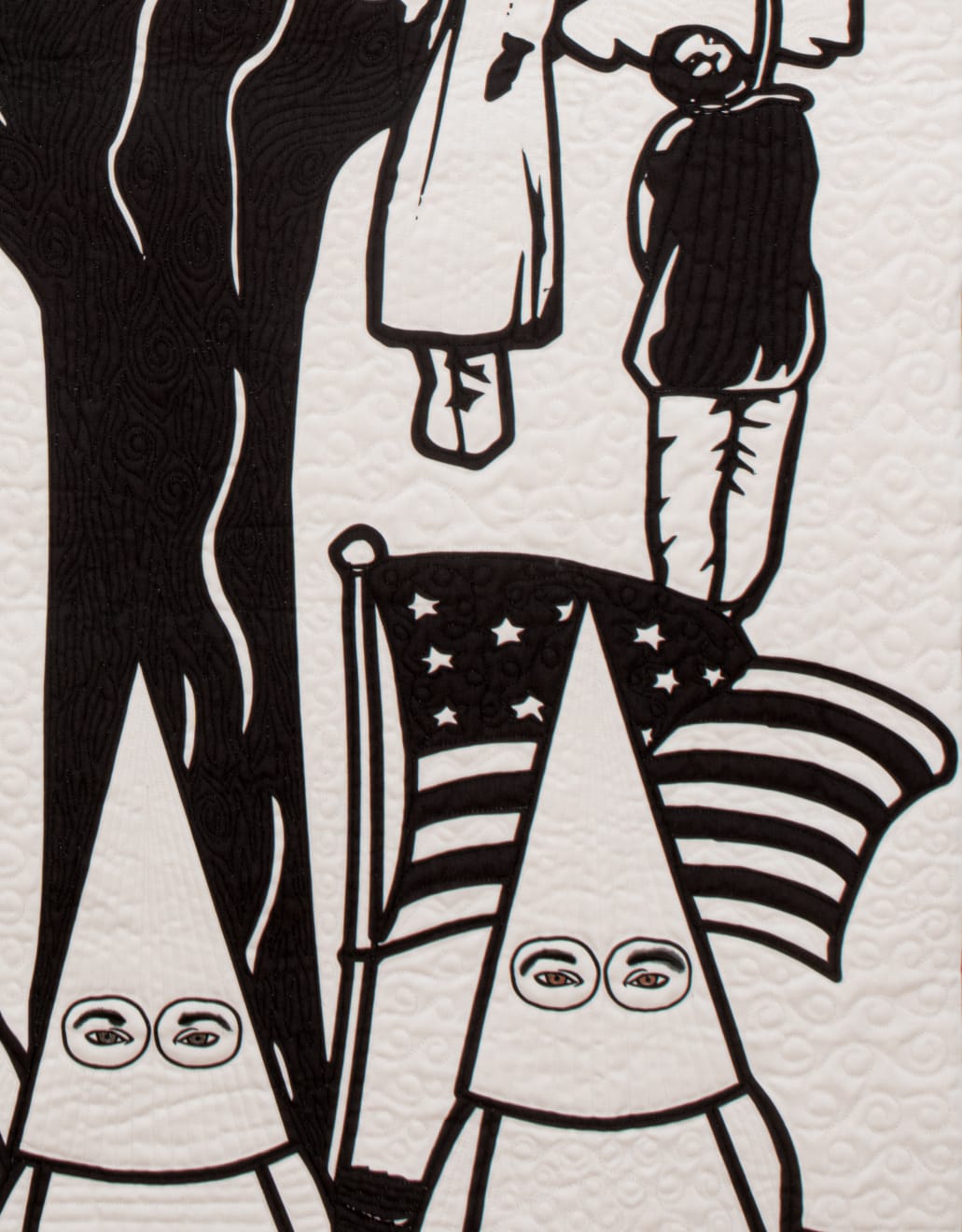Carolyn Mazloomi
Further images
I was inspired to make this series of quilts after reading the book Without Sanctuary: Lynching Photography in America by James Allen. The lynching of Black people in America refers to the extrajudicial killings, often by hanging, carried out by mobs, primarily in the Southern states, from the late 19th century through the early 20th century. These acts of violence were motivated by racism and were often justified by false accusations of crimes, particularly against white individuals. Lynching was used as a tool of terror to enforce racial hierarchy and suppress Black communities. The practice peaked between the 1880s and the 1940s, with thousands of documented cases. It served as a brutal reminder of the systemic racism and violence that permeated American society.
At one time, in our nation’s history, lynching photography was popular. Photographers would travel around the South taking pictures of victims of lynching and the white crowds in attendance. The photos were used to make postcards and trading cards, which were then sold. James Allen, an antique dealer, collected over 100 lynching cards and wrote a book detailing these horrid crimes. A lynching was cause for celebration. Schools would be let out early, businesses would close so white people could attend. Photos showed jubilant crowds, with some people taking pieces of charred skin or body parts as souvenirs. The photos were unbelievable and happened not so long ago in our country’s history.
Jazz singer Billie Holiday recorded the song Strange Fruit. The song, which was written by a Jewish, man Abel Meeropol, and addresses the horrific realities of racial violence and lynching in America. Meeropol was an English teacher in New York City, who wrote the poem after seeing a photograph of two Black men lynched in Indiana. Holiday first recorded Strange Fruit in 1939, and it became one of her most iconic and powerful performances. She would close her performance by singing the song.
The song’s haunting lyrics and emotional delivery brought attention to the brutal injustices faced by African Americans, making it not just a piece of music but a potent social commentary. It is known as one of America’s first protest songs. Holiday’s rendition is often credited with helping to raise awareness of racism and its violent consequences in the United States. Her performance imbued the song with a profound sense of sorrow and urgency, solidifying its place in both music history and the civil rights movement. I have heard the song hundreds of times and find it to be incredibly sad and moving.
The quilt pictures an image of Billie Holiday in the upper left corner, along with images of lynched bodies hanging from trees. There are four miniature patchwork quilt blocks attached to the quilt. My way of paying homage to all the Black quilters who came before. All my quilts have circles in them. The circles symbolize the connection of all humanity, regardless of color, religion or ethnicity, to each other. The quilt is a lesson in American history.








